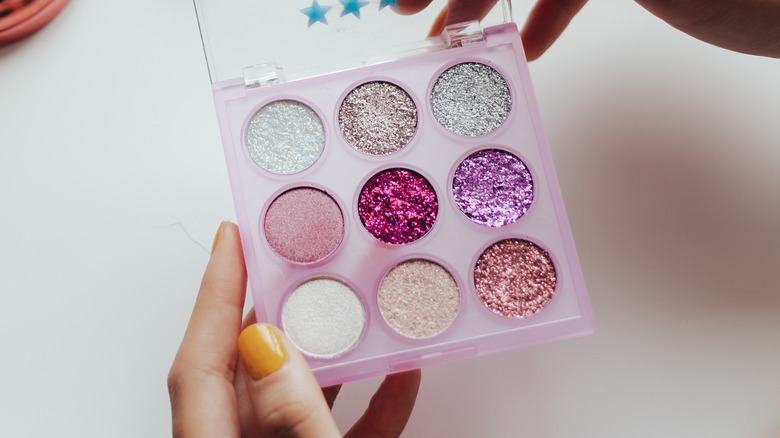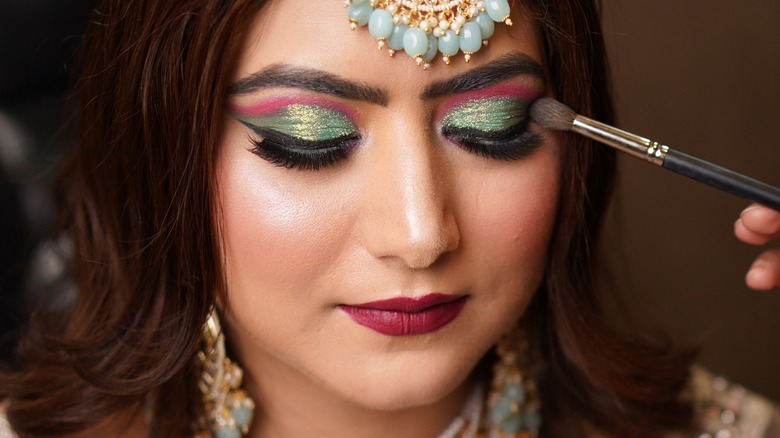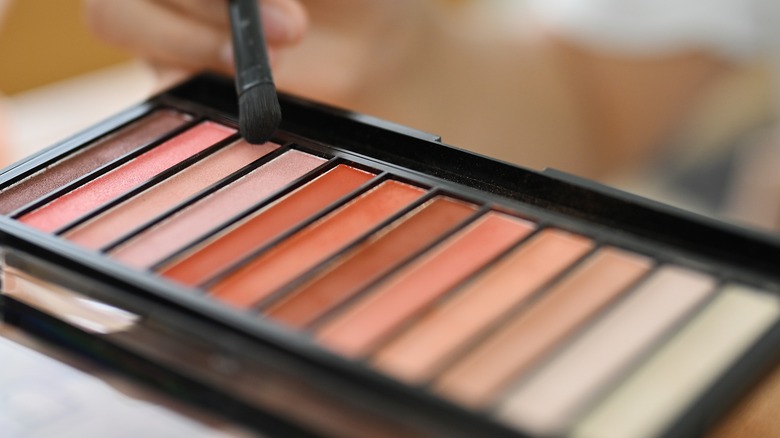Eyeshadow Can Go Bad Much Quicker Than You Think
Ah, eyeshadow! If there's anything that can take your makeup from daytime to nighttime vibe, from power woman to party girl, it must be eyeshadow. Since most of us are told to apply eyeshadow to our lids sparingly, we almost never ask ourselves when they'll expire. As it turns out, eyeshadow does have an expiration date. All makeup items do. When they expire, they become a breeding ground for germs and bacteria.
Cosmetic products, such as mascara, eye shadow, eyeliner, and eye makeup remover, typically contain preservatives to prevent microbial growth and mold, per a study published in the medical journal Experimental Eye Research. However, makeup can go bad even when they contain preservatives, which break down over time. Cosmetics for the eye area have a shorter shelf life than other products, which the U.S. Food and Drug Administration warns could cause eye infections. According to the manufacturer, mascara should be thrown away two to four months after purchase. What about eye shadow? Here's all you need to know about the shelf life of your favorite eye color.
When you should toss out old makeup
Compared to other products, eyeshadow has a far longer shelf life. Powder eyeshadow formulae will last between 24 and 36 months, per Red Apple Lipstick. For cream and water-based eyeshadows, their durability is anywhere from six to 12 months. To protect your skin from germs and possible irritation, consider changing powder eye shadows every six to nine months, cosmetic chemist Jim Hammer tells Allure. If you're not careful, the germs from expired eye color will transfer to your eye and cause an infection. Watch out for cream-based shadows, since they have a propensity to harbor bacteria more quickly than powders. Since some eyeshadows are best applied with fingers, take care to sanitize your hands before touching your eyelid with any formula.
Some makeup products have an expiration date, but others contain only a "period-after-opening" (PAO) indication, which tells you the estimated lifetime of a cosmetic product after its first opening. If the color of your eye shadow has changed or its texture becomes so clumpy that you can't apply or blend it smoothly, there's a high chance your eyeshadow has given up the ghost.
Maintenance tips for your eyeshadow
To protect your eyeshadow from mold, keep the palette in a completely dry environment away from sunlight and air conditioner, per Watsons. This is because your eyeshadow might degrade more quickly in an environment that's hotter or colder than room temperature. Because your fingertips are a breeding ground for bacteria, avoid applying eyeshadow with them. Using your fingers to apply cosmetics to your skin rather than a brush or an applicator might result in the transfer of dirt and oil into your makeup, which could then foster the growth of germs. If your fingertips must be used, wash them carefully before applying makeup to get rid of any extra oil and debris. To clean your powder makeup of germs and dirt, you can spray isopropyl alcohol, an antiseptic, to your powder eyeshadow, face powders, blushers, and bronzers, Spectrum Collections advises. Then, leave your makeup product to air dry.
It's difficult to throw away an eyeshadow palette, especially if you paid a lot for it and haven't used all of the colors. However, makeup is akin to food for the skin. Just as you wouldn't eat expired food for fear of getting food poisoning, you shouldn't let moldy eyeshadow rot your skin either.


